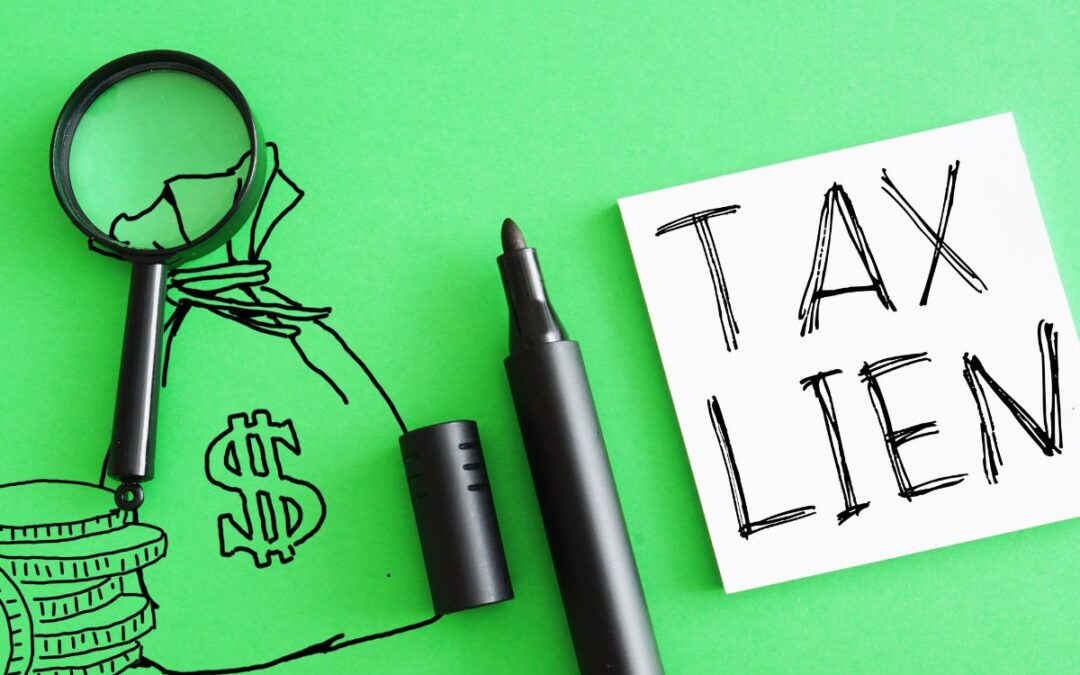Tax liens happen when you owe money to the IRS. These liens give the government legal rights to your property. Filing and paying taxes on time prevents these problems entirely.
Many people struggle with tax payments and accumulate debt over time. The IRS responds by placing liens on homes, cars, and bank accounts. Banks often reject loan applications when they see tax liens.
You can prevent liens by staying current with all tax obligations. Set up payment plans if you cannot pay immediately. The IRS offers various programs to help taxpayers manage debts.
If a lien exists, act quickly to resolve it. Contact the IRS immediately to discuss payment arrangements. You can request lien withdrawal after paying your debt completely.
Tax professionals understand IRS procedures and negotiate effectively. They know which forms to file and important deadlines. Their expertise leads to faster lien removals and better payment terms. Early intervention protects your assets from seizure.

Understanding Federal Tax Liens
A federal tax lien is the government’s legal claim against your property. The IRS uses liens when taxpayers owe money and haven’t paid their debts. This claim covers all your assets, including homes, cars, and bank accounts.
The lien process starts when the IRS sends you a payment notice. You can avoid liens by paying the requested amount immediately after receiving this notice. Ignoring the notice leads to the IRS filing a Notice of Federal Tax Lien. This official document creates a public record of your tax debt.
Tax liens don’t mean the IRS will immediately seize your property. However, they create serious complications when you try to sell or refinance assets. The IRS has first rights to any proceeds from property sales. Other creditors must wait until the IRS receives its payment first.
These liens appear in public records where anyone can view them. Credit agencies include tax liens in your credit reports, damaging your credit score significantly. Lenders often refuse loans to people with active tax liens. Business owners may lose contracts when clients discover tax lien records.
The IRS typically removes liens only after receiving full payment of taxes owed. They must release the lien within 30 days of receiving complete payment. State and local governments also issue tax liens for unpaid state taxes. Some jurisdictions sell these liens to investors who collect the debt themselves. Understanding lien procedures helps taxpayers protect their assets and resolve tax issues effectively.
How Tax Liens Impact Your Life
Tax liens might seem harmless since the IRS doesn’t immediately take your property. Many people mistakenly believe liens only matter when selling assets. This misconception leads taxpayers to ignore liens until serious problems arise. The truth is that liens create multiple complications in your financial life.
- Time and Energy Costs:Resolving tax liens requires significant time investment from taxpayers. You’ll spend hours calling the IRS and waiting on hold. Many people make multiple trips to local IRS offices seeking help. Tax officers may also visit your home or workplace to discuss payment options. These interruptions disrupt your daily routine and work schedule.
- Complete Asset Coverage:Federal tax liens attach to everything you own, not just one property. The lien covers your house, cars, bank accounts, and investment portfolios. Any new assets you buy also fall under the existing lien immediately. You cannot choose which properties the lien affects or protect certain assets.
- Credit and Lending Issues:While liens don’t appear directly on credit reports, lenders easily find them. Banks check public records before approving loans or credit cards. Most lenders reject applications when they discover active tax liens. Refinancing becomes nearly impossible with liens on your property.
- Property Sale Complications:Buyers avoid properties with tax liens because of legal complications. Title searches reveal liens, causing many buyers to withdraw their offers immediately. Even motivated buyers hesitate when they learn about existing tax liens.
- Permanent Debt Obligations: Filing bankruptcy won’t eliminate tax liens or the underlying tax debt. The IRS can eventually levy your property if debts remain unpaid. Levies allow the government to seize assets directly from your possession. Acting quickly prevents liens from escalating into more severe collection actions.
Tax Liens Versus Tax Levies
Tax liens and tax levies are different IRS collection tools with distinct consequences. A lien is the government’s legal claim against your property. A levy involves the IRS actually taking your property or money. Understanding these differences helps taxpayers recognize the severity of their situation.
- How Liens Work:Liens establish the IRS’s right to your property without taking it immediately. They serve as public notice that you owe tax debt to the government. Your property remains in your possession despite the lien’s existence. However, the IRS maintains first rights to proceeds from any property sales.
- How Levies Work:Levies allow the IRS to seize your property and sell it forcibly. The agency can empty your bank accounts to collect unpaid taxes. They can also intercept future deposits until your debt is fully satisfied. Employers must send your wages directly to the IRS under wage levies.
The Levy Process
The IRS cannot levy property without following specific legal procedures first. They must send a final notice called Intent to Levy beforehand. You also receive a Notice of Your Right to a Hearing document. These notices arrive at least 30 days before any levy action begins.
Your Protection Window
This 30-day period provides crucial time to resolve your tax situation. You can negotiate payment plans or settlement options with the IRS. Many taxpayers use this time to hire tax professionals for assistance. Quick action during this period often prevents property seizure entirely. Contact the IRS immediately after receiving levy notices to discuss available options.

How to Prevent Tax Liens
Preventing tax liens is much easier than removing them after they’re filed. Smart taxpayers take proactive steps to avoid liens before problems arise. These prevention strategies protect your assets and maintain your financial freedom.
File and Pay Taxes on Time
Filing your tax returns by April 15th prevents most lien situations entirely. Paying your full tax bill by the deadline stops IRS collection actions. Timely filing shows the IRS you’re responsible and compliant with tax laws. Even partial payments demonstrate good faith efforts to meet your obligations.
- Use Extensions Wisely Request an extension if you cannot file by the standard April deadline. Extensions give you until October to file your completed tax return. Remember that extensions apply to filing, not payment deadlines for taxes owed. Interest and penalties accumulate on unpaid balances after April 15th regardless.
- Get Professional Tax Help Tax professionals help you understand your obligations and meet all deadlines properly. They identify deductions and credits that reduce your overall tax burden significantly. Professional tax planners develop strategies that minimize your future tax liabilities effectively. Their expertise prevents costly mistakes that could trigger IRS collection actions.
- Plan Throughout the Year Year-round tax planning prevents surprise bills at filing time each April. Adjust your withholdings if you consistently owe large amounts when filing returns. Set aside money regularly for estimated tax payments if you’re self-employed. Good planning eliminates the financial stress that leads to unpaid tax debts. Taking these preventive measures protects your assets from future lien risks.
Setting Up IRS Payment Plans
Paying your tax debt prevents the IRS from filing liens against your property. Full payment eliminates lien risks immediately and clears your tax obligations completely. However, many taxpayers cannot afford lump-sum payments for large tax debts. The IRS offers payment plans that make tax debts more manageable financially.
- Payment Plan Options The IRS provides two main payment arrangements for taxpayers with outstanding debts. Short-term plans require full payment within 180 days of approval. Long-term plans allow monthly installments until you pay the entire balance. Your total debt amount determines which plans you can access.
- Eligibility Requirements Short-term plans are available when you owe less than $100,000 total. This includes your original tax debt plus any interest and penalties. Long-term installment agreements require debts under $50,000 to qualify. Taxpayers must be current with all filing requirements before applying.
- Setup Fees and Costs Short-term payment plans have no setup fees, making them cost-effective options. Long-term plans charge setup fees that vary by application method. Online applications cost less than phone or in-person requests. Direct debit payments from checking accounts reduce or eliminate certain fees.
- Payment methods affect your total costs over the plan’s lifetime. Credit and debit card payments incur processing fees with each transaction. Interest continues accumulating on unpaid balances throughout your payment period. Shorter payment periods reduce total interest charges on your tax debt.
- Low-Income Fee Waivers The IRS waives fees for qualifying low-income taxpayers using automatic payments. Other low-income taxpayers receive reduced fees on their payment plan applications. These programs help struggling taxpayers resolve debts without excessive financial hardship. Contact the IRS to determine if you qualify for fee reductions. Acting quickly to establish payment plans prevents liens and protects your assets.
Requesting an Offer in Compromise
An offer in compromise lets you settle tax debts for less than you owe. This program helps taxpayers who cannot pay their full tax obligations. The IRS accepts these offers when collection would create severe financial hardship. Understanding this option can prevent liens and resolve tax debts affordably.
- Qualifying for the Program The IRS has strict requirements for offer in compromise approval. Your assets and income must be less than your total tax debt. You must prove that paying the full amount would cause financial hardship. The IRS examines your ability to pay before making any decisions.
- Application Timing Matters Apply for an offer in compromise before the IRS files a lien. The IRS usually waits for your application decision before filing liens. However, they can start the lien process during your application review period. Quick action gives you the best chance of avoiding liens entirely.
- Effects on Existing Liens Approved offers in compromise stop new liens from being filed against you. The IRS releases existing liens once you complete your compromise agreement terms. This removal clears your public record and restores your financial reputation. Your credit improves after liens disappear from public records.
- Approval Challenges The IRS denies most offer in compromise applications they receive each year. They believe most taxpayers can eventually pay their debts in full. Many applications fail because taxpayers don’t provide sufficient documentation or justification. Professional tax representatives understand what the IRS requires for successful applications. Their expertise significantly improves your chances of getting an offer approved quickly.
Professional Help Prevents Federal Tax Liens
Protecting your assets from tax liens requires understanding complex IRS procedures and regulations. Many taxpayers struggle to navigate these requirements without professional assistance. Tax professionals know which strategies work best for different financial situations. They can evaluate your circumstances and recommend the most effective approach.
- When Prevention Isn’t Possible: Sometimes tax liens are unavoidable despite your best efforts to prevent them. Existing tax debts or missed deadlines may have already triggered lien processes. Professional tax representatives can still help in these challenging situations. They work to minimize damage and expedite lien removal procedures.
- Benefits of Professional Assistance: Tax professionals understand IRS communication requirements and proper documentation procedures. They know which forms to file and when deadlines occur. Their experience helps avoid common mistakes that delay lien removal. Professional negotiators often achieve better outcomes than taxpayers working alone.
- Customized Solutions for Your Situation: Every taxpayer faces unique circumstances requiring personalized strategies for lien prevention or removal. Tax professionals assess your financial situation and develop appropriate action plans. They communicate directly with the IRS on your behalf. This representation reduces your stress and improves resolution chances.
Taking Action Today Don’t wait until liens damage your credit and complicate your finances. Early intervention provides more options for resolving tax issues successfully. Professional tax services help you understand available options and choose wisely. Contact experienced tax professionals to discuss your situation and protect your assets. Their expertise guides you through complex IRS procedures toward favorable outcomes.
Conclusion
Federal tax liens threaten your financial freedom and asset ownership when tax debts remain unpaid. Prevention remains your strongest defense against these serious IRS collection actions. Filing returns on time and paying taxes promptly eliminates most lien risks entirely. When full payment isn’t possible, explore IRS payment plans or compromise offers immediately. These programs provide manageable solutions that prevent liens while resolving your tax obligations responsibly. Remember that liens affect all your assets and complicate future financial transactions significantly. Professional tax assistance dramatically improves your success rate in preventing or removing liens. Don’t wait until the IRS files a lien against your property. Take action today by contacting tax professionals who understand complex IRS procedures and requirements. Their expertise protects your assets and restores your financial peace of mind quickly.
Frequently Asked Questions
How long does the IRS wait before filing a tax lien?
The IRS sends a Notice and Demand for Payment first. You have 10 days to respond before they can file. Most people receive several notices over multiple months before liens occur. The IRS typically files liens for debts exceeding $10,000.
Can I sell my house if there’s a federal tax lien on it?
Yes, you can sell property with an active federal tax lien. The IRS gets paid first from your sale proceeds. Work with the IRS to arrange lien discharge before selling. This process helps attract more buyers to your property.
Will a tax lien appear on my credit report?
Federal tax liens stopped appearing on credit reports in 2018. However, lenders still find liens through public record searches. Financial institutions always check for liens before approving loans. Mortgage lenders particularly scrutinize public records during application reviews.
What’s the difference between lien withdrawal and lien release?
Lien releases happen after paying your full tax debt. The IRS removes liens within 30 days of payment. Withdrawals completely remove the public lien notice from records. The IRS may withdraw liens for compliant taxpayers with payment plans.
How much does it cost to hire help for tax lien issues?
Professional fees depend on your case complexity and needed services. Initial consultations are often free to evaluate your situation. Simple lien releases cost a few hundred dollars typically. Complex cases involving settlements may cost several thousand dollars. Most professionals charge flat fees instead of hourly rates. Their expertise often saves money through better IRS negotiations.


Recent Comments